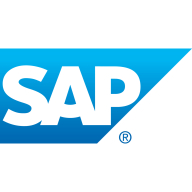

SAP BusinessObjects Business Intelligence Platform and Microsoft Power BI compete in the business intelligence and data analytics sector. Microsoft Power BI appears to have the upper hand due to its ease of use and cost-effectiveness for various business sizes.
Features: SAP BusinessObjects Business Intelligence Platform delivers comprehensive reporting and data analysis tools like Crystal Reports and Web Intelligence, facilitating complex scheduling and semantic layer functionalities. It is known for its flexibility, scalability, and data source integration capability. Microsoft Power BI distinguishes itself with strong data visualization, integration with Microsoft services, and user-friendly drag-and-drop functionality, making it optimal for self-service BI and accompanied by regular feature updates.
Room for Improvement:SAP BusinessObjects Business Intelligence Platform faces integration issues and a complex upgrade process. Users often criticize its outdated interface and limited self-service features. Microsoft Power BI struggles with large datasets and demands technical expertise for advanced functions. Users desire better real-time data handling and simpler error messages for easier troubleshooting.
Ease of Deployment and Customer Service: SAP BusinessObjects Business Intelligence Platform often involves a complex on-premises setup with mixed reviews on customer service, which varies with issue complexity. Microsoft Power BI benefits from flexible cloud-based deployment options, simplifying onboarding, and is backed by extensive Microsoft support resources and community engagement, earning a high customer service rating.
Pricing and ROI:SAP BusinessObjects Business Intelligence Platform is seen as expensive with complex licensing, catering to large enterprises, but it provides positive ROI through comprehensive capabilities. Meanwhile, Microsoft Power BI offers competitive pricing, making it attractive for smaller businesses seeking maximal value with minimal costs.
In a world surrounded by data, tools that allow navigation of large data volumes ensure decisions are data-driven.
Power BI is easy to deploy within an hour, providing robust security against data leaks.
The initial investment will be more, but the ROI is also good, so they can consider it if they're looking for something in the long run.
For most of my clients using the on-premises version of SAP BusinessObjects Business Intelligence Platform, the return on investment is positive due to its affordability and ability to handle diverse reporting needs while automating information distribution.
I have seen a return on investment so far in the form of saved time and resources.
The significant drawback I notice is that Microsoft's size makes it hard to get specific change requests addressed unless they involve a bug.
We have a partnership with Microsoft, involving multiple weekly calls with dedicated personnel to ensure our satisfaction.
The support is good because there is also a community available.
I would rate their technical support as excellent.
I have experience with SAP technical support and have supported customers, including those in financial services.
Sometimes, they forward my ticket to the technical team, especially when my issue involves technical aspects that basis people may not be familiar with.
You expect only a small percentage of users concurrently, but beyond a thousand concurrent users, it becomes difficult to manage.
With increasing AI capabilities, architectural developments within Microsoft, and tools like Fabric, I expect Power BI to scale accordingly.
As more data is processed, performance issues may arise.
I rate the scalability of SAP BusinessObjects Business Intelligence Platform as a nine due to performance issues related to optimizing parts.
In terms of stability, there's no data loss or leakage, and precautions are well-managed by Microsoft.
We typically do not have problems with end-user tools like Excel and Power BI.
It is very stable for small data, but with big data, there are performance challenges.
When they tried upgrading from 4.2 to 4.3, they found it buggy in some reports, which was quite problematic.
This makes Power BI difficult to manage as loading times can reach one or two minutes, which is problematic today.
Access was more logical in how it distinguished between data and its formatting.
Microsoft updates Power BI monthly based on user community feedback.
I've worked with other tools, for example, Microsoft Power BI, which is visualization-wise very strong.
SAP BusinessObjects is expected to be phased out by 2027 as reports are moving to SAP Analytics Cloud.
I would appreciate integration with Outlook as an additional feature in the future to make it closer to a perfect score.
I found the setup cost to be expensive
Power BI isn't very cheap, however, it is economical compared to other solutions available.
The pricing for Microsoft Power BI is low, which is a good selling point.
SAP BTP is an expensive solution.
The price is very competitive and reliable.
I rate the pricing for SAP BusinessObjects Business Intelligence Platform as a seven or eight.
In today's data-driven environment, these tools are of substantial value, particularly for large enterprises with numerous processes that require extensive data analysis.
Within the organization, Microsoft Power BI is used to create dashboards and gain insights into data, enhancing data-driven decision-making.
To reduce the need for highly skilled personnel, we can engage someone who is just familiar and has a basic understanding of Microsoft Power BI, while AI can handle the major tasks through either agent AI or requirement analysis.
For calculations, SAP BusinessObjects Business Intelligence Platform outperforms all other tools such as Power BI and Tableau, showing more accuracy, reliability, and flexibility compared to all other BI tools worldwide.
The best feature about it for me, and for them, is the fact that you have a universe that is well made.
The important features include a dashboard and reporting capabilities through SAP Analytics Cloud, which I consider to be a better version than the initial BusinessObjects platform.
| Product | Market Share (%) |
|---|---|
| Microsoft Power BI | 12.7% |
| SAP BusinessObjects Business Intelligence Platform | 2.5% |
| Other | 84.8% |


| Company Size | Count |
|---|---|
| Small Business | 134 |
| Midsize Enterprise | 57 |
| Large Enterprise | 165 |
| Company Size | Count |
|---|---|
| Small Business | 32 |
| Midsize Enterprise | 19 |
| Large Enterprise | 65 |
Microsoft Power BI is a powerful tool for data analysis and visualization. This tool stands out for its ability to merge and analyze data from various sources. Widely adopted across different industries and departments, Power BI is instrumental in creating visually appealing dashboards and generating insightful business intelligence reports. Its intuitive interface, robust visualization capabilities, and seamless integration with other Microsoft applications empower users to easily create interactive reports and gain valuable insights.
SAP BusinessObjects Business Intelligence Platform is a versatile and flexible solution for reporting and dashboards, focusing on analytics and ad hoc reporting. It can be deployed on-premise or in the cloud. The solution includes tools such as Web Intelligence, Crystal Reports, SAP Lumira, and Analytical Cloud and is primarily used for comprehensive business intelligence reporting.
The most valuable features include excellent reporting features, good technical support, scalability, and the ability to translate database data into business language. The solution has helped organizations by providing analytics, monitoring KPIs, and making important decisions as a financial business.
SAP BusinessObjects Business Intelligence Key Features
Reviews from Real Users
SAP BusinessObjects BI stands out among its competitors for a number of reasons. Several major ones are its user-friendly dashboard, its impressive reporting and analytic features, and its ability to integrate with multiple solutions.
A managing partner at a tech services company writes, "One of the most valuable features of SAP BusinessObjects is that it's not a dashboarding solution. It's a real product. You can create operational reports and publish it to anyone. You can create schedules. You can create a Universe, semantic layers. There's also a security configuration. It's a huge product, so if there is a business need, SAP BusinessObjects can cover it."
An associate manager at a consultancy notes, "It provides flexibility for creating reports. It is very good for creating highly complex reports. I like this solution because when I buy BusinessObjects, it comes with many components, such as reporting, dashboard, and data visualization tools. Its performance is good. It is running on top of SAP BW and SAP HANA."
A manager of data analytics and interfaces at a healthcare company says, "It has got great flexibility. As a reporting tool, it has a great deal of flexibility for numerous data resources that you can bring into it. It allows you to write your SQL query directly within the product. It has great visualization.
We monitor all BI (Business Intelligence) Tools reviews to prevent fraudulent reviews and keep review quality high. We do not post reviews by company employees or direct competitors. We validate each review for authenticity via cross-reference with LinkedIn, and personal follow-up with the reviewer when necessary.